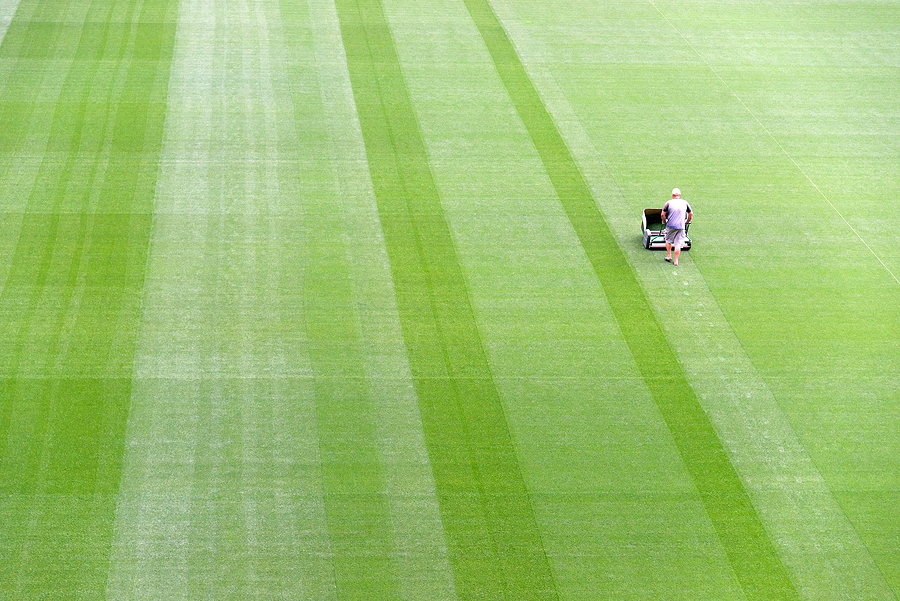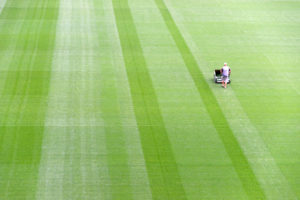
19 Jan Natural Grass Athletic Field Care Challenges
 Behind any green, luscious and healthy field of natural grass turf, there’s a dedicated management crew that’s tasked with maintaining it so it’s picture perfect anytime there’s a game scheduled. And proper care and maintenance is no easy task in a perfect world, but it can become even more difficult when various intangibles are at play. In this post, we’re going to discuss some of the key athletic field care challenges that turf management professionals regularly encounter on natural grass fields.
Behind any green, luscious and healthy field of natural grass turf, there’s a dedicated management crew that’s tasked with maintaining it so it’s picture perfect anytime there’s a game scheduled. And proper care and maintenance is no easy task in a perfect world, but it can become even more difficult when various intangibles are at play. In this post, we’re going to discuss some of the key athletic field care challenges that turf management professionals regularly encounter on natural grass fields.
Key Natural Grass Challenges
Inclement Weather
One of the biggest challenges that turfgrass management teams face is inclement weather. Heavy rain can render a field unplayable quickly if it isn’t designed with proper drainage in mind. In some cases, it can even be beneficial to cover the field—or parts of it—with a protective tarp when it’s not being used.
Budgetary Restrictions
It’s estimated that a natural grass field costs anywhere from $50,000 to more than a half-million dollars based on grass type and other materials (not to mention size). Additionally, there’s a cost for equipment to maintain the field. Lesser-quality grass is likely to require more maintenance than high-end species, which can strain maintenance budgets and require more care.
Scheduling Issues
Whether it’s navigating the weather, games and practices scheduled, or just the schedule of your maintenance team, sometimes it can be difficult to find the time to put the work in to keep the field in good shape.
Multi-Functional Play
In a perfect world, an athletic field is only used by one team or organization—and used in a way to allow the grass to adequately recover between events. Unfortunately, that’s not always the case. A professional team may play its game on the field one day, and an amateur team the next. Or the baseball diamond during the week may be converted to a football field on the weekends. Heavy usage makes mowing, watering, fertilizing and aerating all the more important.
Grass Replacements
One of the nice things about natural grass is that it grows back—but it takes time to grow back. So while you can patch certain areas that have become worn or sun-damaged, you also have to budget time for the grass to adequately fill in. One way to help alleviate grass replacement or repair while in season is to regularly overseed and stick to a schedule that involves proper mowing, fertilizing and aerating.
Contact Soil and Water Consulting Today
Natural grass has its challenges, and we’re here to help. As a Brookside Labs partner, Soil and Water Consulting is dedicated to making sure that your grass is as healthy as possible by helping you better understand your soil and water to implement an action plan to help ease many of the challenges you may face. Contact us today for more information.

